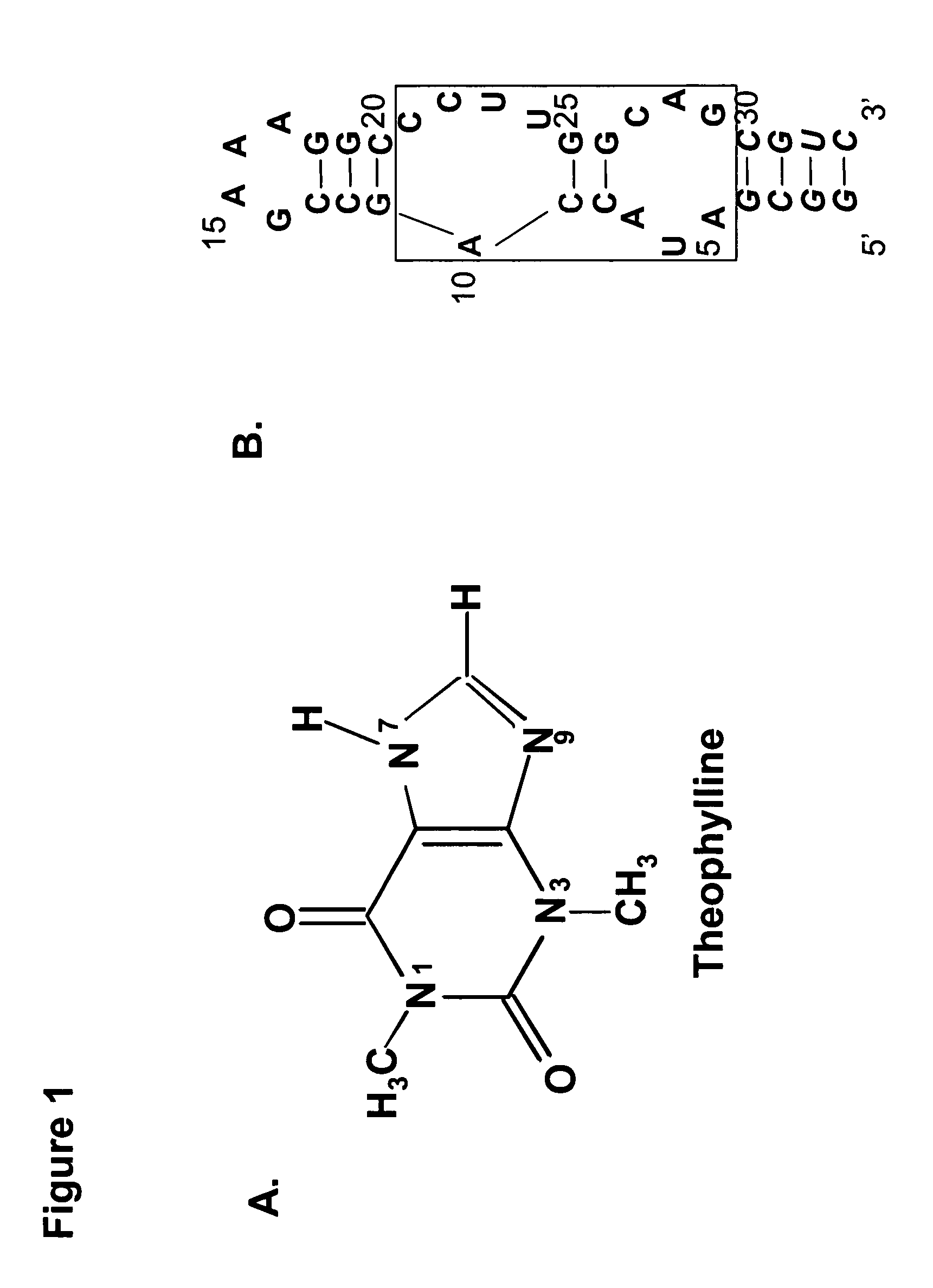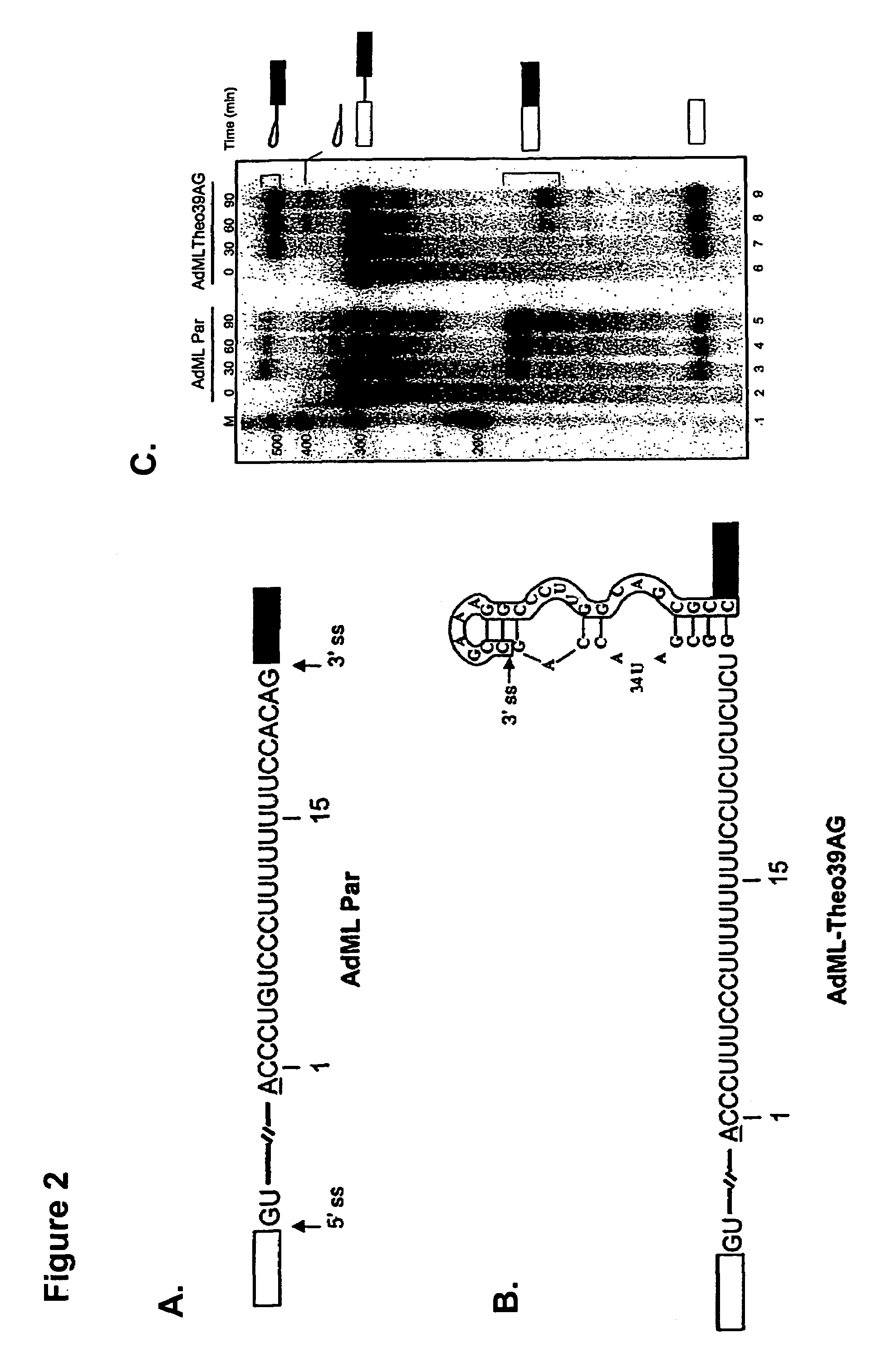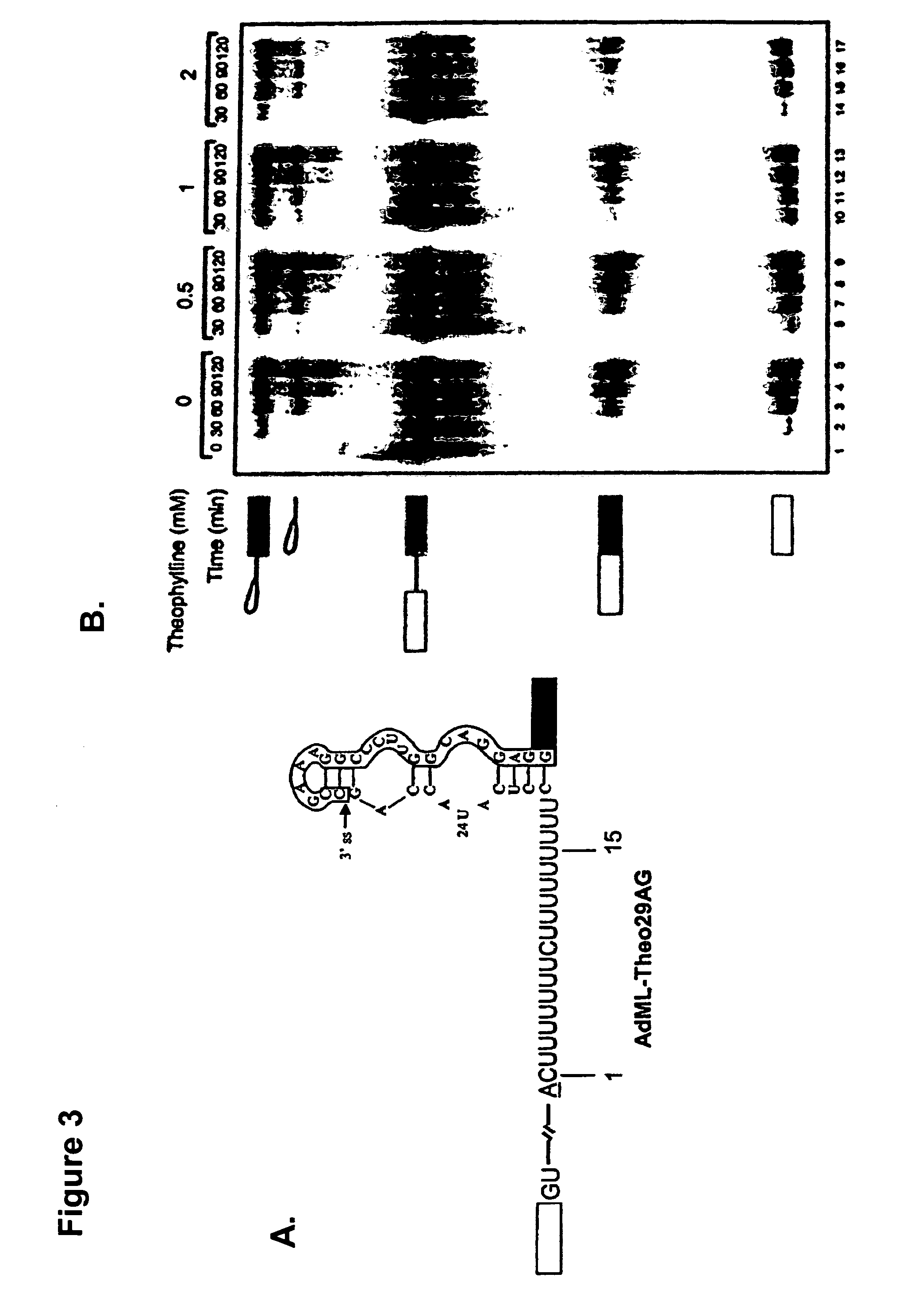Artificial riboswitch for controlling pre-mRNA splicing
a technology of artificial riboswitch and premrna, which is applied in the direction of instruments, drug compositions, organic chemistry, etc., can solve the problem that theophylline does not exert any influence on the splicing of premrna, and achieves the effect of modulating
- Summary
- Abstract
- Description
- Claims
- Application Information
AI Technical Summary
Benefits of technology
Problems solved by technology
Method used
Image
Examples
example 1
Pre-mRNA Substrates
[0135]AdML Par and AdML21AG pre-mRNAs were generated by in vitro transcription using BamHI digested plasmids pAdML Par (Gozani et al., 1994) and pAdML21AG, respectively. AdML-Theo39AG pre-mRNA was synthesized from a PCR derived template, which was amplified from plasmid pAdMLΔAG (Gozani et al., 1994) using T7 primer (5′-TAATACGACTCACTATAG-3′; SEQ ID NO: 30) and oligonucleotide #17179 (5′-TCAACGTCGAGACGCTGCCAAGGGCCTTTCGGCTG GTATCGCCAGAGAGAGAGG-3′; SEQ ID NO: 31) as forward and reverse primers, respectively. Plasmids encoding AdML-Theo29AG, AdML-Theo27AG and AdML-Theo-Stem21AG pre-mRNAs are derivatives of pAdML (Gozani et al., 1994) and were constructed by PCR using T7 primer as the forward primer and oligonucleotide #17396 (5′-TTGACGTCGACCTCCTGCCAAGGGCCTTTCGGCTGGTATGAGGAA AAAAAAAGAAAAAAAGT-3′; SEQ ID NO: 32); oligonucleotide #17395 (5′-TTGACGTCGACCTGCCAAGGGCCTTTCGGCTGGTATGGAAAAAAAAAGAAAAA AAGT-3′; SEQ ID NO: 33); and oligonucleotide #22735 (5′-TTGACGTCGATCAGCT GCCA...
example 2
[0136]Linearized plasmid (1 νg) or PCR generated DNA (˜150-200 ng) was used as template for run-off transcription. A typical (10 μL) in vitro transcription reaction consisted of 40 mM Tris-HCl (pH 8.0), 2.0 mM spermidine, 10 mM DTT, 20 mM MgCl2, NTP mixture (0.4 mM CTP and ATP, and 0.1 mM GTP and UTP), 2.0 mM cap analog (NEB), ˜10 μCi [γ-32P]UTP, 10-20 units SP6 (NEB) or T7 polymerase (Ambion). After incubation at 37° C. for 2 hours, the reaction was terminated by adding 12.5 μL stop buffer and RNA was purified on a 10% denaturing polyacrylamide gel.
example 3
[0137]Nuclear extracts were prepared from HeLa cells (obtained from National Cell Culture), essentially as described by Dignam et al., (Dignam et al., 1983). To ensure that theophylline binds to its RNA target, a solution (5 μl) consisting of 32P-labeled pre-mRNA (5-10 fmol, ˜10,000 cpm per reaction), indicated concentration of theophylline, 0.5 μl BC300 (20 mM HEPES, pH 8.0, 20% glycerol, 300 mM KCl, 0.2 mM EDTA) and 0.25 μl 160 mM MgCl2 were heated to 65° C. for 5 minutes, followed by 20 minutes incubation at room temperature. Next, 0.5 mM ATP, 20 mM creatine phosphate, 0.4 units of RNasin (Promega), 1.0 mM DTT, 6.25 μl HeLa nuclear extract, and water up to 12.5 μl (all concentrations are final) was added and incubation continued at 30° C. for the indicated time. Where indicated, theophylline was substituted by caffeine or water. Splicing reaction was terminated by the addition of 125 μl stop buffer (100 mM Tris-HCl, pH 7.5, 10 mM EDTA, 1% SDS, 150 mM NaCl, ...
PUM
 Login to View More
Login to View More Abstract
Description
Claims
Application Information
 Login to View More
Login to View More - R&D
- Intellectual Property
- Life Sciences
- Materials
- Tech Scout
- Unparalleled Data Quality
- Higher Quality Content
- 60% Fewer Hallucinations
Browse by: Latest US Patents, China's latest patents, Technical Efficacy Thesaurus, Application Domain, Technology Topic, Popular Technical Reports.
© 2025 PatSnap. All rights reserved.Legal|Privacy policy|Modern Slavery Act Transparency Statement|Sitemap|About US| Contact US: help@patsnap.com



